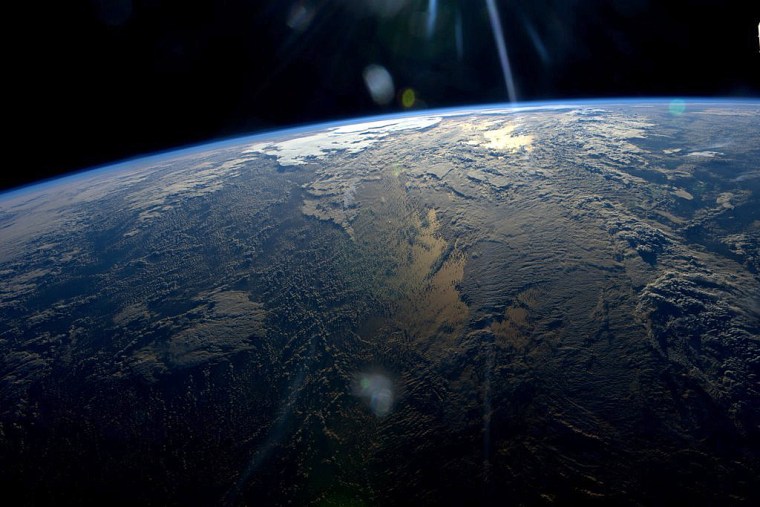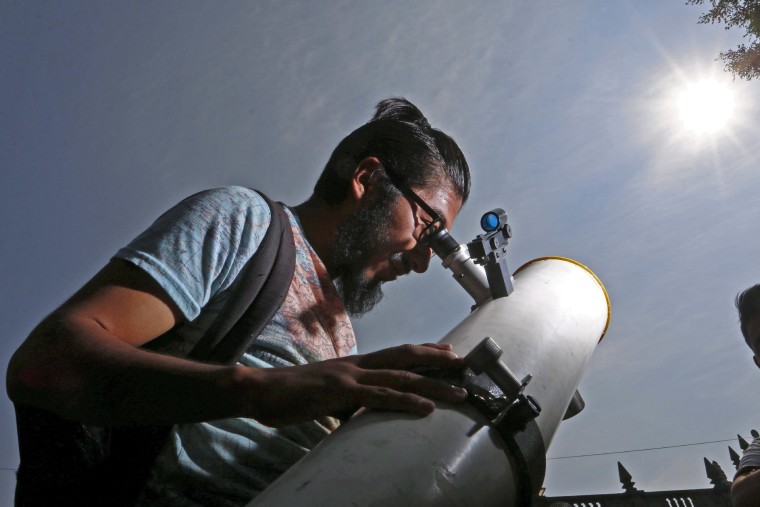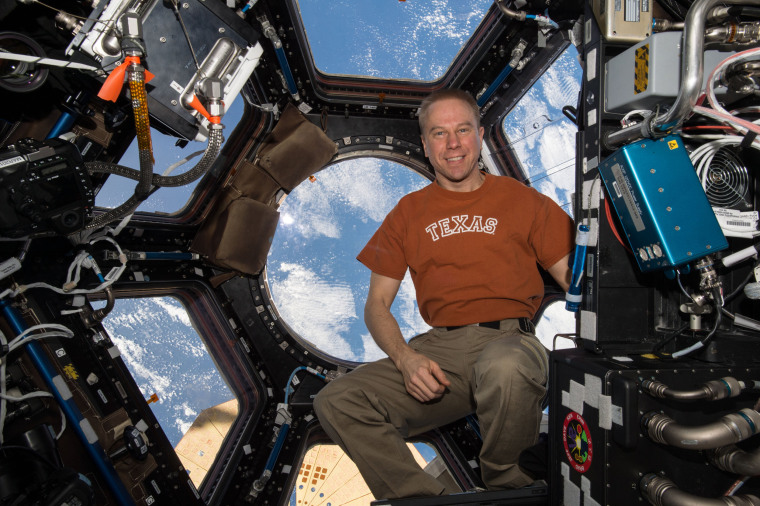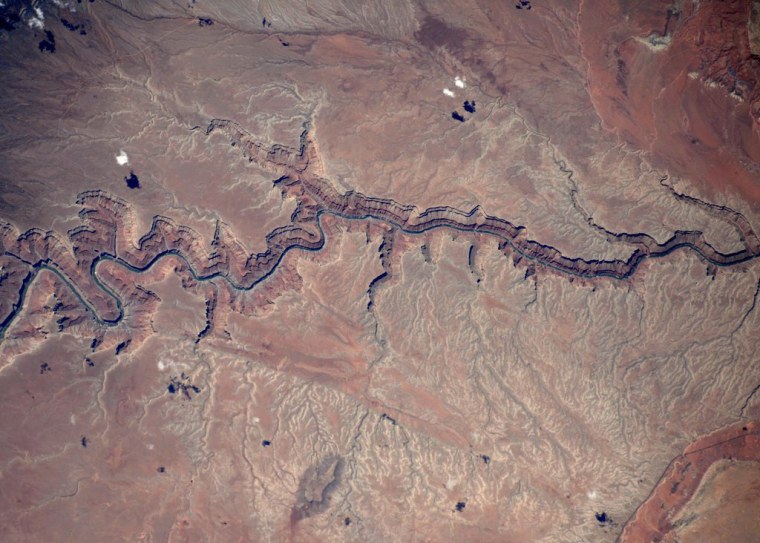
Space
Month in Space: May 2016
Tiny satellites fly free, a shuttle fuel tank rolls through Los Angeles and more of the month's best space photos.
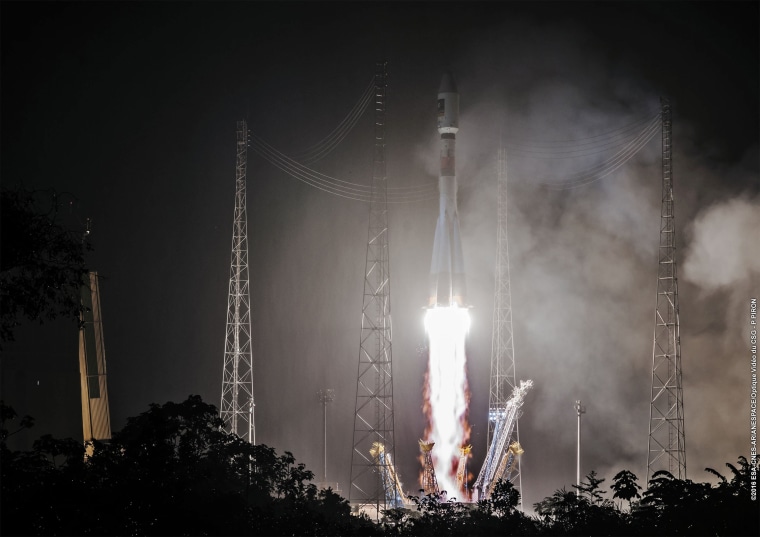

Japanese JAXA astronaut Takuya Onishi is reflected in a mirror as he attends a training session at the Gagarin Cosmonauts' Training Center in Star City, outside Moscow, on May 24. Members of the International space crew, Russian cosmonaut Anatoli Ivanishin, Japanese JAXA astronaut Takuya Onishi and NASA astronaut Kate Rubins are scheduled to take off from Kazakhstan's Baikonur cosmodrome on June 24.
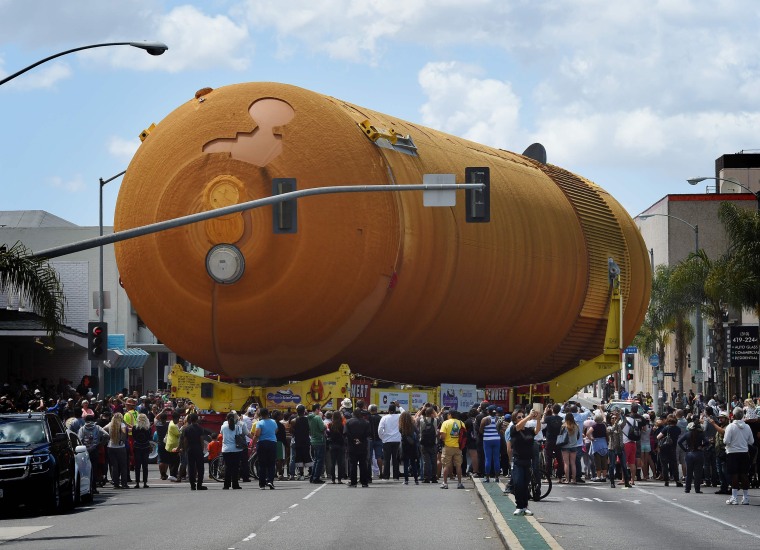
The ET-94 space shuttle external fuel tank travels through Inglewood to complete its 4,000 nautical mile from NASA's Michoud Assembly Facility in Louisiana to the California Science Center in Los Angeles on May 21. It will be paired with the space shuttle Endeavour in a vertical launch position at the museum.
PHOTOS: Space Shuttle Fuel Tank Rolls Slowly Through Los Angeles

This combination of images provided by NASA shows the inflation over more than seven hours on May 28 of the Bigelow Expandable Activity Module at the International Space Station. BEAM is a prototype space habitat that can be folded up like a parachute and reduced to nearly one-fifth its inflated size, making it easier to pack for a trip into space. Expandable habitats take up less room in a payload fairing than rigid, metal habitats, and are also lighter, which lowers the cost of sending them to space.
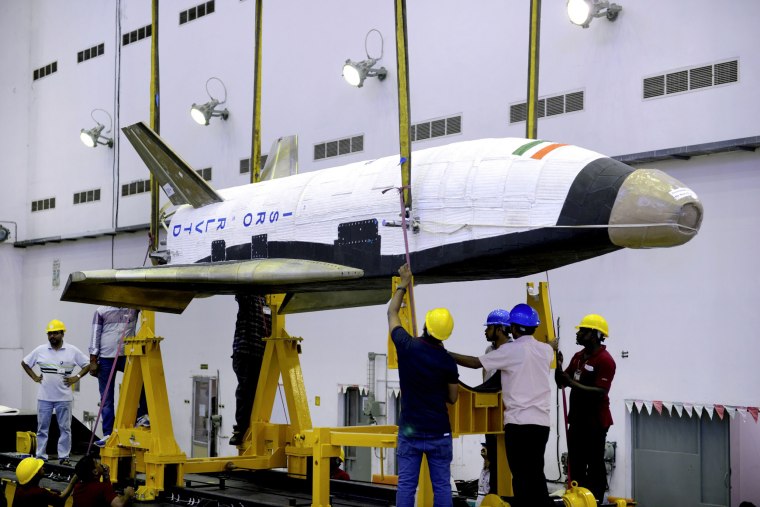
Employees of the Indian Space Research Organization (ISRO) inspect a scale version of a "Reusable Launch Vehicle" or RLV-TD as it is readied for launch from Sriharikota, on the southeast coast of India on May 14.
India successfully launched its first mini-space shuttle on May 23 as New Delhi's famously frugal space agency joined the global race to make rockets as reusable as airplanes. The shuttle was reportedly developed on a budget of just one billion rupees ($14 million), a fraction of the billions of dollars spent by other nations' space programs.
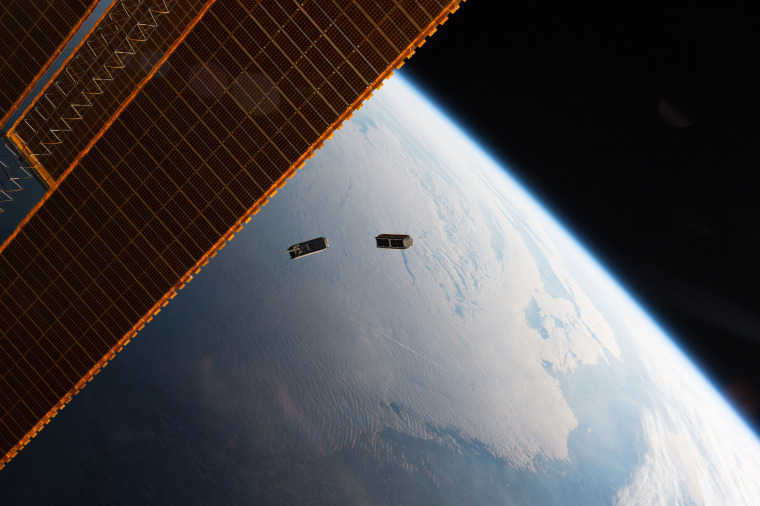
CubeSats fly free after leaving the NanoRacks CubeSat Deployer on the International Space Station on May 17.The two Dove satellites, which are just a foot long, are part of a constellation designed, built and operated by Planet Labs Inc. to take images of Earth from space. The images have several humanitarian and environmental applications, from monitoring deforestation and urbanization to improving natural disaster relief and agricultural yields in developing nations.
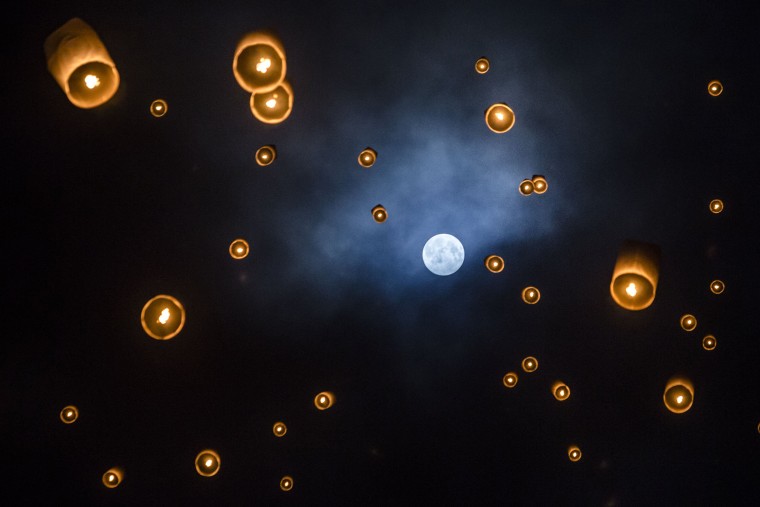
Lanterns fly into the air below a full moon during celebrations for Vesak Day on May 21 in Magelang, Central Java, Indonesia. Vesak is observed during the full moon in May or June with the ceremony centered around three Buddhist temples. The holy day marks the birth, the enlightenment to nirvana, and the passing of Gautama Buddha, the founder of Buddhism.
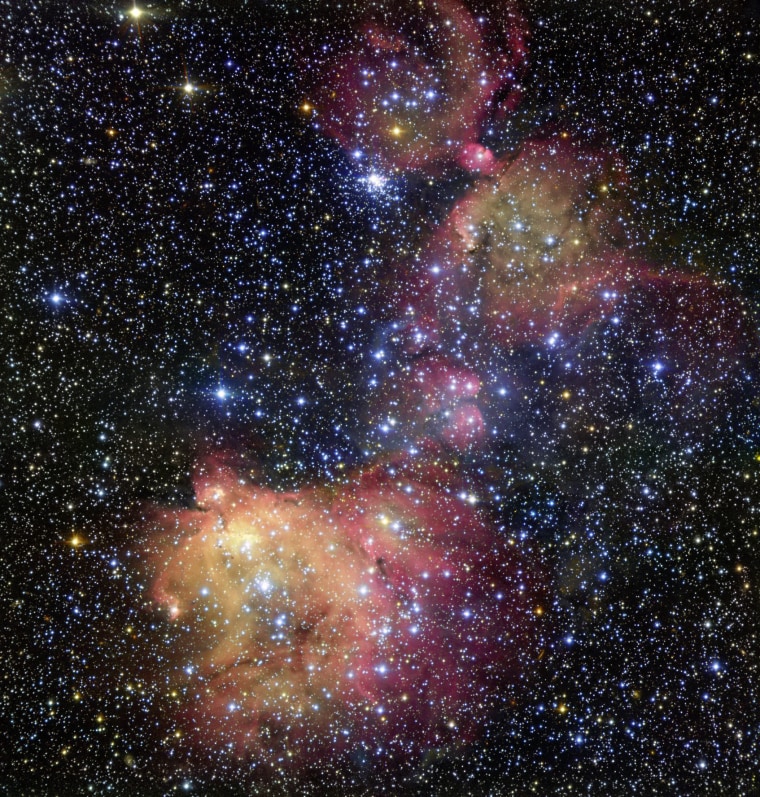
Light from blazing blue stars energizes the gas left over from the stars' recent formation in this image released May 18, by the European Southern Observatory. The result is a strikingly colorful emission nebula, called LHA 120-N55, in which the stars are adorned with a mantle of glowing gas. Astronomers study these beautiful displays to learn about the conditions in places where new stars develop.
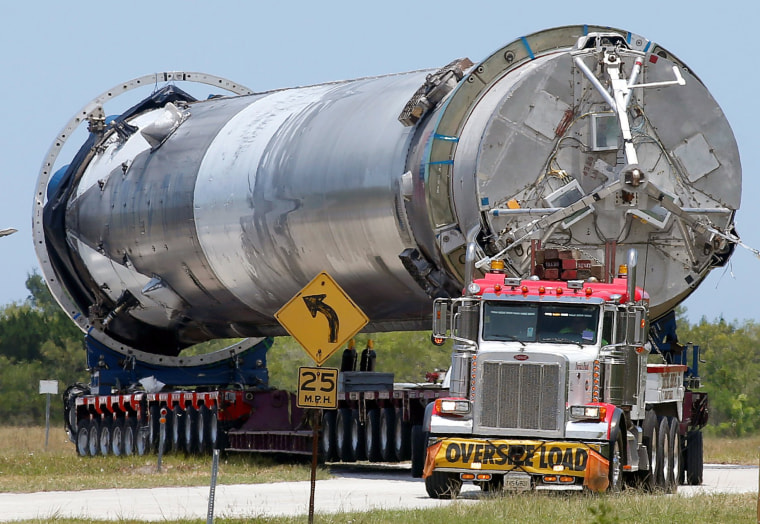
The recovered first stage of a SpaceX Falcon 9 rocket is transported to the SpaceX hangar at launch pad 39A at the Kennedy Space Center in Cape Canaveral, Florida, on May 14. The vehicle was launched on May 6 and returned to land a short time later aboard a barge in the Atlantic Ocean.
SpaceX wants to recycle boosters, usually discarded in the ocean, to lower launch costs and open space up to more payloads and people.
